What is project management?
Project management is the creation of processes, methodologies, tools, skills, and knowledge to create, plan, and execute a given project. It's a profession, a task, and an industry all at once. While the nature of project management varies a lot depending on the given context, the ultimate goal is always to do a great job churning out that next great project.
Project management fits into countless different industries. Whether you work in engineering, IT, construction, healthcare, marketing, or just about anything else, you'll likely work with or at least encounter at least a few project managers throughout your career.
The truth is, regardless of the kind of project a project manager is working on, their job boils down to the same essential tasks. They need to establish the most important project objectives and figure out what steps to take (no matter how many) to achieve those goals. Along the way, they keep their teams organized and check quality control to make sure everything is coming along the way it should.
What do project managers do?
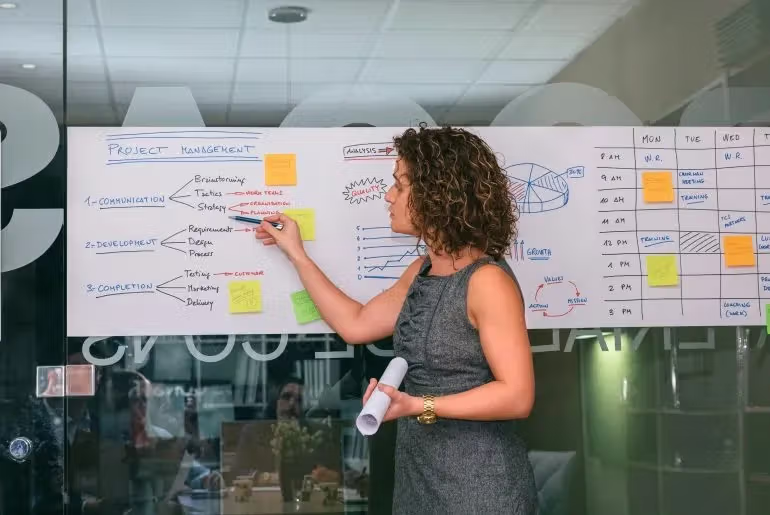
Put simply, the project manager is the most important person in the project management process. Being a project manager is a double-edged sword because of the amount of responsibility they take on. If the project is a success, they'll get a lot of praise and credit. However, when problems arise they often have to take the blame and ultimately find a solution.
Project managers are always well-known to everyone on the project team as they are ultimately in charge of the project. They attend the most important meetings, make difficult decisions, monitor the project's progress, and keep all the different stakeholders involved in the project happy. Not an easy task.
In order to get more specific about what project managers actually do, let's consider their day-to-day tasks. When managing a project, the project manager has to keep the six aspects of projects in mind at all times:
- Scope
- Schedule
- Cost
- Risk
- Quality
- Benefits
These are precisely the project areas project managers have to be mindful of when planning, executing, and making sure their project goes off without a hitch.
The history of project management

Project management has existed for a very long time... much longer than the term project management, that's for sure. All you have to do is think about all the massive projects that have been carried out and completed over the past few thousand years. Take the pyramids, the Great Wall of China, Machu Picchu or the Colosseum for instance. Someone was managing those projects.
Nevertheless, the modern conception of project management started in the early 20th century. There's some debate as to what kicked it off, but many argue that the innovation of Gantt charts was a key milestone. The Gantt chart was invented by Henry Laurence Gantt in order to show project progress in a visual manner. Gantt charts were first famously used on large-scale American projects like the Hoover Dam in 1931 and the interstate highway network.
The 1950s and 60s are largely considered to be other important eras that contributed towards modern project management. Well-known methodologies such as the Critical Path Method (CPM) and the Waterfall Method started to take shape and rise in popularity.
More recently, the development and adoption of Agile methodology, the advent of professional project management certification such as that from the Project Management Institute (PMI), and the growth of the internet age have really contributed to project management knowledge and set the industry on its course over the past couple decades.
All of the above have led to a few important developments for those working in project management in the 21st century:
- Being a project management professional (PMP) is an accredited, widely recognized career path with an array of certification, training, and skills associated with it.
- A focus on people rather than products. This goes hand-in-hand with the philosophy behind Agile methodology. Project management previously focused on the physical and the tangible, whereas now the project team and end-users are prioritized.
- Project management is a whole new ball game with the continuous growth of the internet age. Innovation and technology has by-and-large improved the project management world by providing programs, tools, software, communication solutions, and more. They've also enabled team members to work together even if they don't live in the same geographic area, making remote teams more commonplace (and more efficient) than ever.
Stages of project management

It's widely acknowledged that there are five phases of project management. These phases come together to provide a general blueprint for any project's lifecycle from beginning to end. They also provide a project outline of the overarching steps a project manager and their project team will have to take to plan, execute, and ultimately launch their project.
The 5 stages of project management are:
- Conception & Initiation
- Definition & Planning
- Launch & Execution
- Performance & Control
- Project Conclusion
Before we provide a breakdown of all five of these phases for you, here's a little tip. If you're tasked with writing a project management document like a project charter, a project plan or even a product requirements document think about your project in relation to the above phases. They'll provide a great starting point for your document draft and help you get organized.
Stage 1: Conception & Initiation

The conception and initiation phase of a project is essentially when everything gets started. You, your client, and/or other key stakeholders will come up with an idea, play around with that idea, undertake research and due diligence, and ultimately decide whether your project idea is worth bringing to life or not.
Of course, conception and initiation are two different things. Speaking concretely, the conception phase normally consists of:
- Thinking of and/or identifying the project concept
- Determining the overarching goals for the project
- Undertaking any research or initial testing deemed necessary to lay the foundation for the project
- Developing a business case document or other similar document to determine the project's feasibility
The conception step ends once the prospective project's managing parties give the project the green light. Once you know your idea will become a reality, you start the initiation phase and begin taking steps to get your project started. This is normally done by assembling a project charter, project plan or project initiation document (PID).
Stage 2: Definition & Planning

Stage two is a great endeavor and is without a doubt one of the most overwhelming steps in a project's lifecycle. It involves the development and revision of a large number of project documentation. On the bright side, however, if you knock stage two out of the park, you'll have set a very strong foundation for the rest of your project work.
Stage two is known as the definition and planning stage. It's important because it lays the groundwork for all the steps that will contribute to your project getting done and being successful.
By the end of the stage, everyone on the project team should know what they'll be working on, when, and why. This is normally accomplished with the development of a project management plan.
Of course, the best way to get organized is to be perfectly clear about what you're trying to do. This is why goal setting is so important at this stage. Many project teams use the S.M.A.R.T. goal approach. That is:
- Specific: Don't be vague. Answer the questions who, what, when, where, and why, in relation to your project management goals
- Measurable: Be sure that you'll be able to measure the success of the goals you're setting. Lay out what criteria you'll use
- Attainable: Determine what you'll have to do to achieve these goals and whether or not you'll be able to do so
- Realistic: Only set goals that you're motivated to reach and will realistically be able to accomplish
- Timely: Establish goals that you'll be able to achieve in the time you have available
As mentioned, there's a lot of paperwork during the definition and planning phase. Project managers must keep the six phases of projects in mind here and be sure that they're covering all their bases when getting things rolling.
Some key documents that project managers normally write in this phase include:
- A project scope statement
- A statement of work
- A work breakdown structure (WBS)
- An initial project timeline identifying important dates and milestones
- A Gantt chart
- A project budget
- A RACI template
- A communication plan
- A risk management plan
Stage 3: Launch & Execution
In stage three, all your hard work pays off and your project comes to life. The preparation stage comes to an end and you and your project team start putting your plans into action.
The launch and execution stage usually begins with a kick-off meeting where everyone involved determines how all the moving parts will come together to form your project launch.
It's worth mentioning that the project execution phase is usually the longest and most demanding phase. There's a lot at stake and a lot to keep in mind. Because of this, the project manager normally takes on a supervising role while the project team and other workers carry out tasks and make deliverables happen.
Speaking concretely, the following activities usually happen within a project's launch and execution phase:
- Regular review meetings to make sure that everything is getting done and going according to schedule.
- Consistent communication with the project team, clients/stakeholders, and other service providers.
- General team management.
- Solution and documentation of any problems, changes, roadblocks, or important events that arise in relation to the project.
- Reviewing, executing, and sticking to the project scope.
- Revising and monitoring the project timeline and associated milestones.
- Executing the overarching project management plan step by step.
Ideally, throughout this phase everyone involved in the project should be working productively and feeling good. The project should be in accordance with the projected timeframe and budget, clients and stakeholders should be happy with how things are progressing, and project managers and teams should be feeling motivated and positive about their work.
Stage 4: Performance & Control
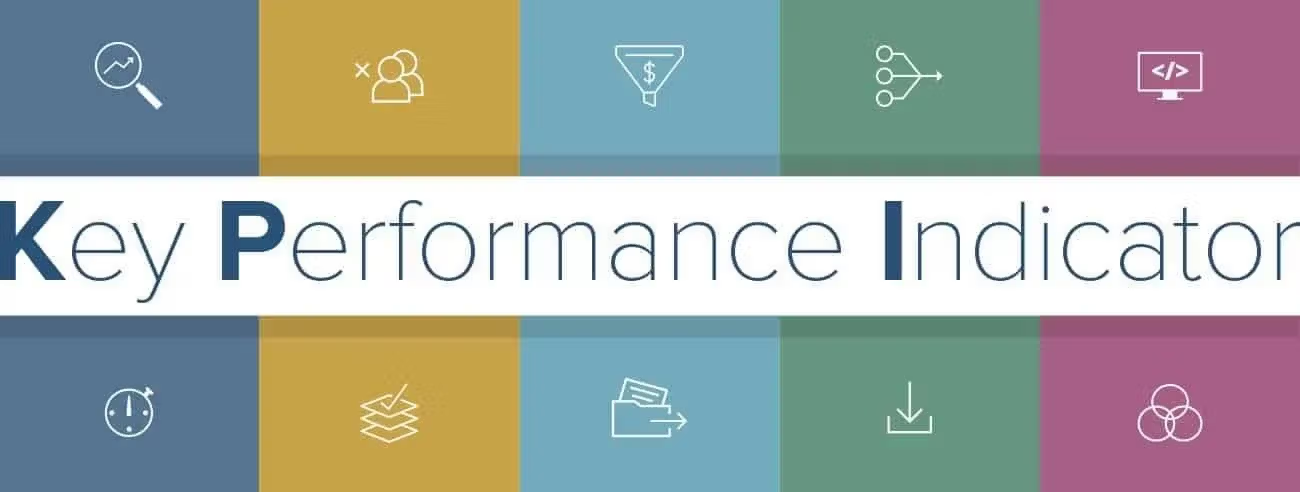
In the fourth phase, also known as the performance & control phase, you'll be ensuring that all the plans that you've put into action are producing the desired results and are consistent with the project management plan. Basically, if you made plans to help you reach certain objectives, you'll need to make sure that you're actually making progress towards those objectives in this phase.
While the project manager often takes a step back in phase three and assumes a more managerial role, their tasks get kicked up a notch once again in phase four. This is because they are ultimately responsible for the project's success and must do everything in their power to make that a reality.
Project managers use key performance indicators (KPIs) to determine their project's performance and progress. Remember when we talked about setting measurable goals in phase one? Well, this is why that's so important. If you establish criteria to help you measure your project's success early on, determining which KPIs to use at this phase is much easier.
Some commonly used KPIs include:
- Deliverables: Are specific deliverables being accomplished? Are they satisfactory?
- Overall project performance: To what degree is the project going according to plan? How many and what kind of issues and/or successes has it faced? How has this affected the project overall?
- Effort & cost tracking: How much money and/or resources has this project consumed? Is it in accordance with the projected project budget? Is the project on track to be completed by the due date?
- Project objectives: How is the project progressing in relation to the client and/or stakeholders' objectives? Is the project on schedule and consistent with the agreed upon budget?
Stage 5: Project Conclusion

Finally all your hard work will come to an end and you'll be able to celebrate your project's success! Once you arrive at the fifth phase, also known as project conclusion or project closure, your project will be complete. You and your team will have completed all the project deliverables, reached the project's objectives, and finished all your tasks and pending documents. It's time to congratulate yourself on a job well done.
Nevertheless, there are still a few loose ends to tie and concluding tasks to complete during your project's last phase. Some of the most common examples include:
- Terminating and/or concluding contracts with any freelancers or contractors you brought on to work on the specific project.
- Holding a project conclusion meeting where you and your team identify the successes and failures of the project, keeping in mind any lessons learned to integrate moving forward.
- Recognizing special achievements or specific team members who really went the extra mile.
- Preparing a final project reportand project budget.
- Collecting feedback and final sign-offs from clients and/or stakeholders.
- Compiling a list of any outstanding tasks that need to be addressed before the project can truly be concluded.
Types of project management
Project management is an incredibly diverse field. For every different type of project that exists, there are just as many different ways to go about managing them. While there's no right way to approach project management, consider some of the most popular types of project management methods out there below.
Benefits realization management
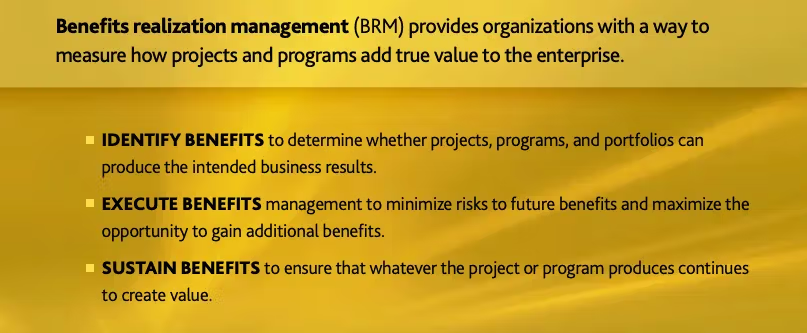
Benefits realization management (BRM) is a project management approach that focuses on outcomes or benefits rather than products or outputs. It considers desired results first and the process second. Basically, under this approach project management teams and their clients work together to determine what benefits they're trying to attain with their project and what the best way is to make that a reality.
This is a great way to reduce risk in a project, ensure that everyone is on the same page, and lay strong groundwork for measuring success down the road. This approach can be broken down into three main steps:
- Identify benefits and determine whether the project can produce the intended results.
- Execute benefits while minimizing risk and maximizing future additional benefits.
- Sustain benefits by making sure that the project will continue to produce these benefits and create value for as long as possible.
Critical chain project management
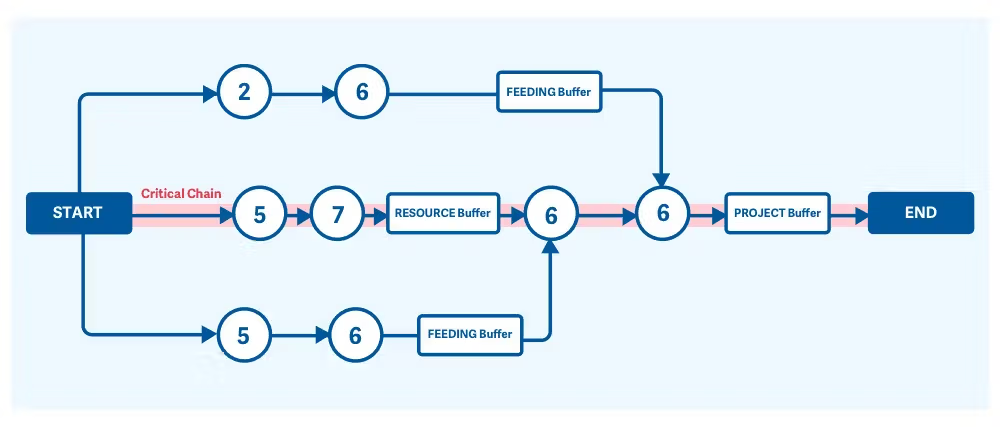
Critical chain project management (CCPM) is a project management approach that largely differs from more traditional methods. It emphasizes the resources required to complete a given project above all else. Of course, resources can refer to anything from people to money to materials to space. It also accounts for a degree of uncertainty in all tasks and therefore provides buffers to make sure everything gets done on time.
CCPM is a bit difficult to wrap your head around if you haven't used it before. To make things more clear, it can be broken down into a series of steps:
- Identify your critical path (often done with work breakdown structures) by making a list of all your key deliverables and project tasks. Be sure to single out those that are the most important or most time consuming.
- Take note of any foreseen constraints to your resources.
- Keep your team focused on individual tasks and avoid multitasking.
- Cut the estimated time you need for your project delivery in half to avoid procrastination and increase motivation.
- Implement time buffers to account for uncertainties.
- Develop a detailed project model.
Earned value management

Earned value management (EVM) is a project management approach that's all about project performance. Due to this, it's a great technique to use if you want thorough project forecasting and monitoring. It also largely relies on quantitative data, so if numbers and objectivity are your game you'll love EVM. NASA largely uses NVM, if that's any indication.
Earned value management works so well because of its systematic approach. It determines how well your project is doing by looking at variances between the work that's been completed and the work that's still coming down the road. It also assesses project success based on the project baseline, cost management, and project schedule.
EVM might not be right for every project, but those who use it love it because it provides great performance tracking, fosters communication and transparency with stakeholders, reduces risk, and results in high degree of accountability.
Iterative and incremental project management
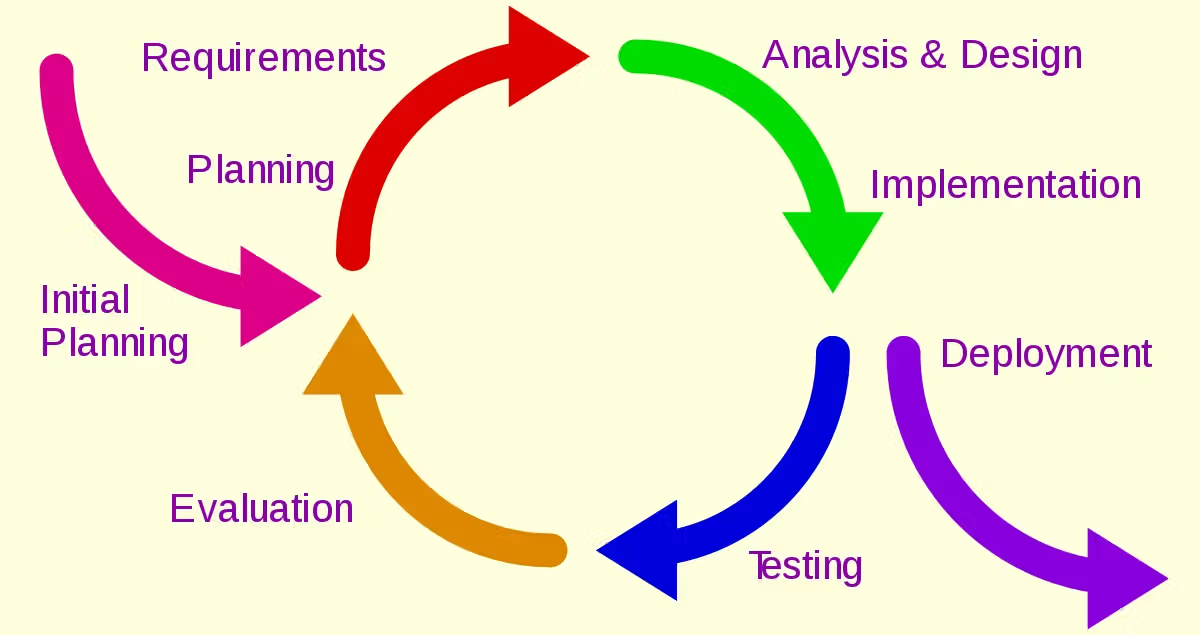
Several different types of iterative and incremental project management approaches have evolved over the years, namely Agile project management, the dynamic systems development method, and extreme project management. This just goes to show the popularity of this approach in the modern day.
Iterative and incremental project management essentially breaks complex, high-risk, large-scale projects into a series of mini-projects based on time or task. This approach is popular because more traditional phased approaches are not considered to work well with large-scale, multi-company projects. They are seen to have too many moving parts and changing requirements to be compatible with the classic project phases.
The wide adoption of this approach makes sense as projects are consistently getting more complex as they involve remote parties and companies working together all around the world.
Project management methodologies
Within the variety of project management types out there, there's also a wide range of different methodologies used by project team members all around the world. These are important tools, so let's dive into them a little deeper.
Agile
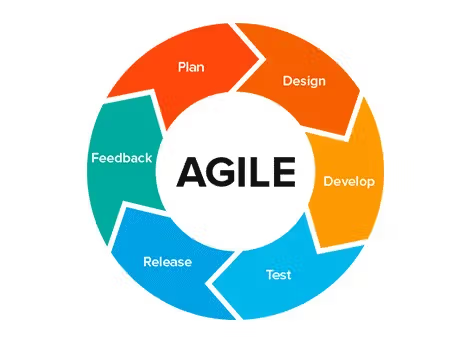
Agile methodology is one of the most widely-used methodologies in the project management world at the moment. It consists of breaking a project down into more manageable tasks to be completed in specific periods of time.
It lives up to its name because it's meant to be just that: agile. It gives teams the tools they need to change direction quickly. It's popular because it's considered to be compatible with complex projects, gets work done quickly, is great for change management, and allows for easy adaptation to changing project requirements.
Waterfall

The waterfall methodology is one of the most traditional project management processes out there. It differs from the Agile methodology because it's linear and does not account for the possibility of much change in the project plan. It basically breaks a project down into sequential chunks. Then, team members work on one chunk after the other, only beginning the next chunk when the previous one has been concluded.
Although the waterfall methodology has fallen in popularity in recent years, it's still seen as effective for straightforward projects that are compatible with a detailed, unchanging plan and a linear timeline.
Scrum
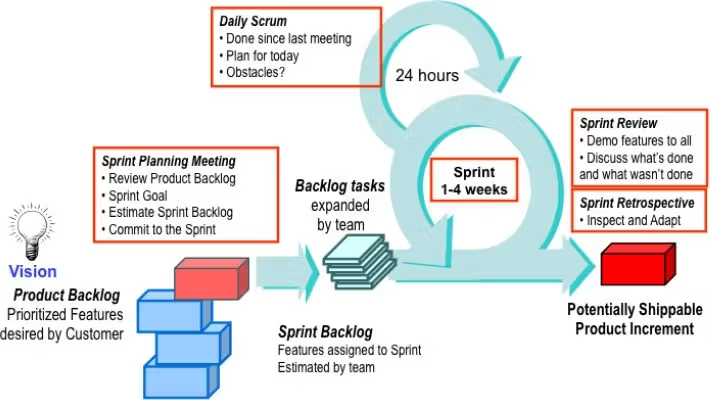
The scrum project management methodology fits within the broad framework of the Agile approach. As such, it presents the same benefits such as speed, flexibility, and adaptability to change. It consists of dividing a project into very short phases known as sprints. As you can infer from the name, things move quickly. Teams meet daily in order to discuss the tasks they're currently working on and solve any problems that come up.
Teams that use scrum methodology are small and are led by a leader known as the scrum master.
Shape-up/Cycles
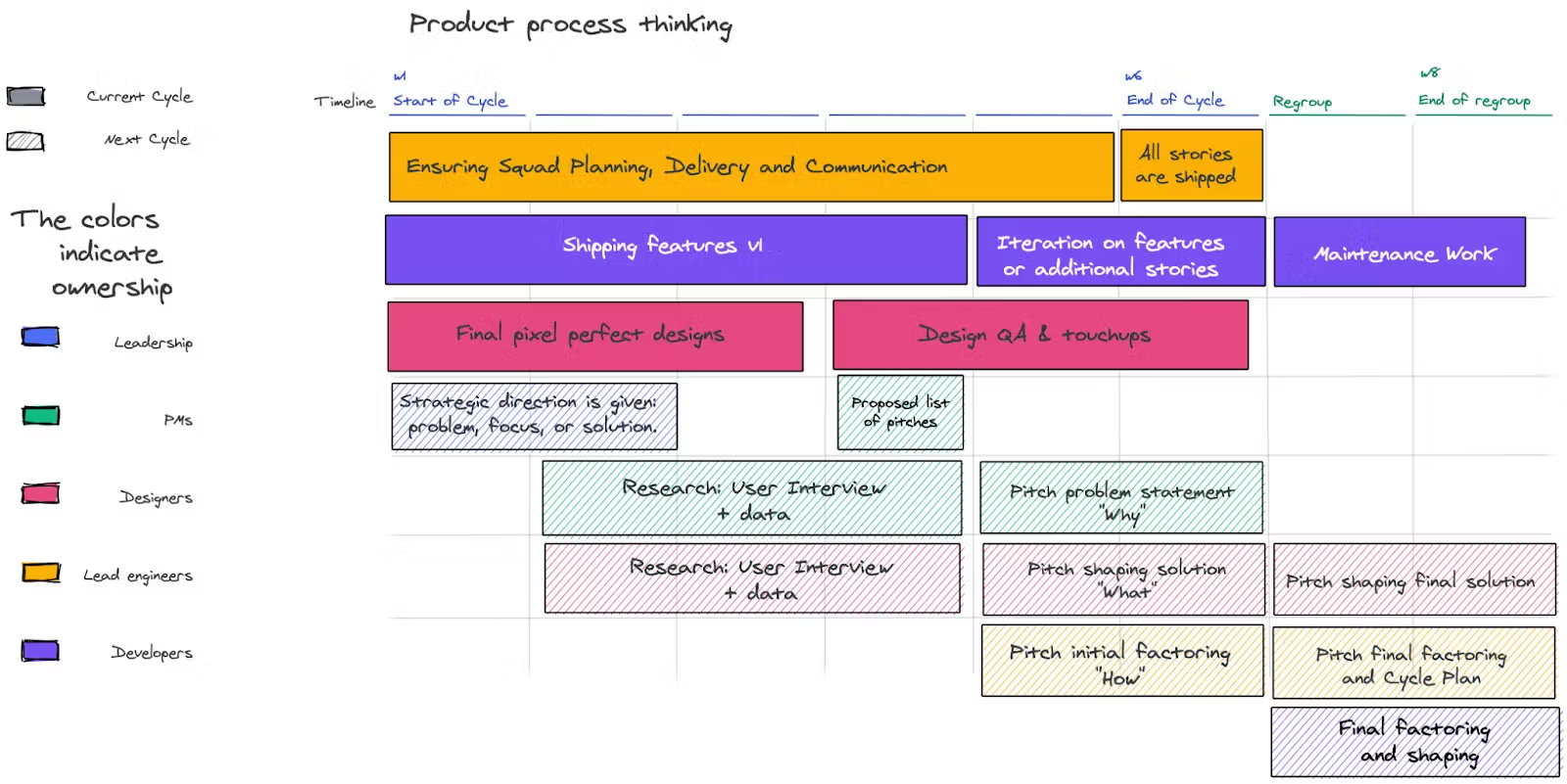
The shape-up or cycles approach is a dynamic methodology currently being used by Slite's project team. It's based on Basecamp's shape-up approach and runs in cycles that last for six weeks, with the last two weeks of every cycle being reserved for planning and regrouping.
Teams are grouped into product squads that are centered around primary product areas. Each squad is autonomous but collaborates and shares best practices with the rest of the team. They also have at least one member that's a designer, as well as two developers. Squads prioritize their work based on challenges facing either their customers or their business. They use their pitches to define problems and loosely identify solutions. Finally, they begin working towards that goal and start making it a reality.
Build a project management timeline
How you assemble a project management timeline will vary depending on your project needs and the project management approach you prefer. However, some kind of timeline is indispensable to most project plans or project charters. Nevertheless, there are a few key steps to keep in mind that will make the creation of an excellent project timeline that much easier:
- Write your project scope: Before developing an accurate timeline for your project, it's important that you know exactly what falls within the framework of your project and what doesn't. That's what your project scope document is for. If you need help getting started, check out this free project scope template.
- Determine key deliverables: This is normally done by writing a work breakdown structure (WBS) document that breaks your project down into smaller pieces.
- Break things down even further: Now that you've determined your deliverables, go a step further and break them down into tasks and sub-tasks. Ask yourself: "What are all the things I'll have to do to accomplish this deliverable?"
- Consider dependencies: Dependencies affect how your project will be carried out. They're basically things that have to happen in order to get started on certain tasks.
- Estimate timing. Consider your list of tasks and determine how long you'll need to finish them. Avoid being overly optimistic or overly conservative in your estimates.
- Identify resource availability: At the end of the day, you'll need resources to finish your project. Resources can be everything from employees to equipment to technology.
- Take note of important milestones: This will help you keep track of your progress and keep your team motivated.
- Bring everything together into an amazing project timeline.
Project management tools
There are a wide variety of tools available in every project manager's tool belt. The options are endless, but we've gone into a little bit more detail about some of the most widely known project management tools out there. Some of them are so widely used that they've become household names and have actually shaped the trajectory of the project management industry itself.
Kanban board
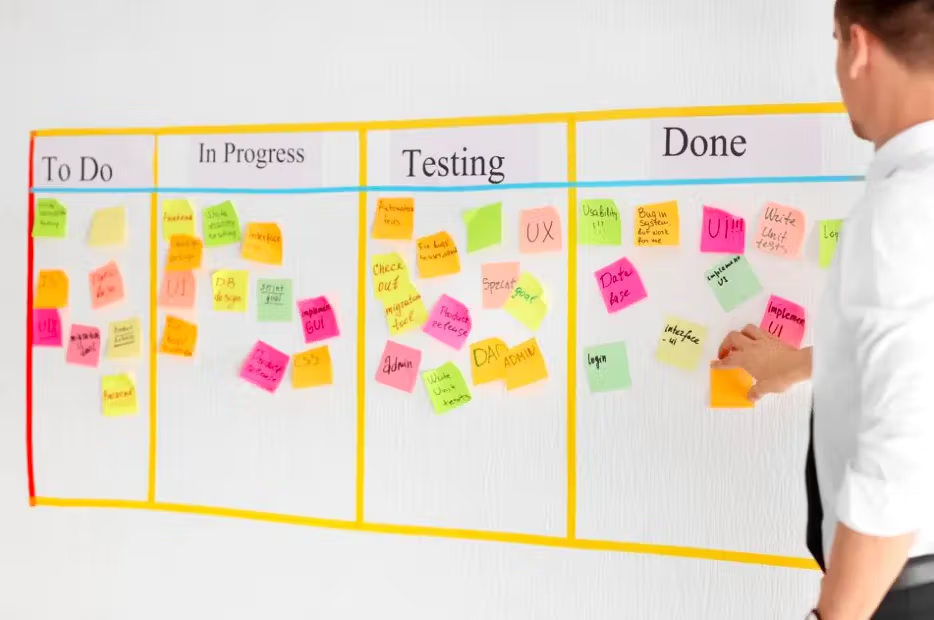
A Kanban board is a project management tool that allows for the visualization of workflows. In fact, the word kanbanmeans visual signal in Japanese. They can be either digital or physical and are made up of columns and cards that reflect project progress. They're also frequently used in Agile methodologies.
Broadly speaking, Kanban boards can be divided into five main components: visual signals, columns, work-in-progress limits, commitment points, and delivery points.
Task list
Using task lists as project management tools might seem obvious, but they are truly invaluable collaboration tools. Use them for general task management: put all your pending tasks in writing, get organized, delegate work, and monitor progress. Sometimes only a to-do list will do.
Writing a task list can be as simple as putting a pen to paper and jotting down some notes, but if you want to take things to the next level try a document collaboration software like Slite to keep all your information organized and secure in one place.
Gantt chart
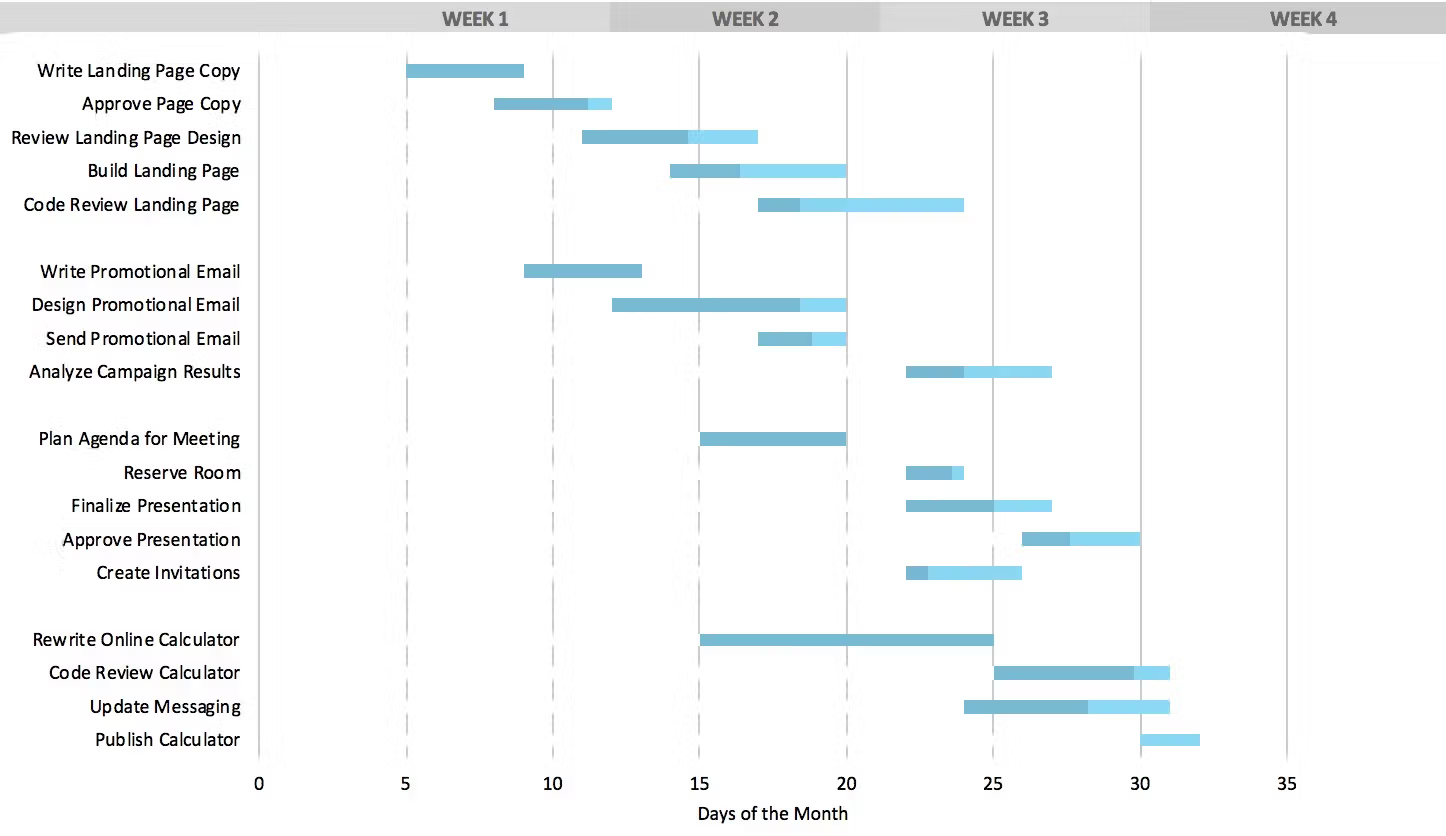
As discussed in the project management history section, Gantt charts are so widely used in project management that they've largely contributed to the development of the industry itself.
Put simply, they help visualize tasks in relation to time. They're most helpful for assessing the start and end points of different tasks, as well as the tasks pending on a specific day or week. They also illustrate what your project tasks are and who is working on them. Gantt charts are especially helpful in stakeholder management and promoting transparency.
Project calendar
Last but not least, nothing will keep your team organized and your project goals on track like a project calendar. A great project calendar will contain all your project's most important events, milestones, and deadlines. It should be aligned with your project timeline and can even be used to reflect human resources information like vacations, working hours, and vacation time.
Most project management software like Asana have great calendar functionalities, but many teams use Google Calendar successfully as well.
Enterprise AI Search for Project Teams
Project management tools excel at organizing tasks and timelines, but they often struggle with knowledge retention across project lifecycles. How many times has your team recreated work because they couldn't find previous project documents? Or spent hours hunting for that crucial technical specification buried in Slack threads?
This knowledge gap becomes critical in project management where decisions need context from past projects, client requirements, and technical specifications scattered across multiple tools.
Super solves this by connecting all your project management tools into one intelligent search interface. Instead of digging through Linear tickets, Slack conversations, and Google Drive folders, project managers can ask natural language questions like "What caused the API delays in Project Alpha?" and get comprehensive answers with source citations.
Key Benefits for Project Managers:
- Cross-tool intelligence: Connects project updates in Linear with customer feedback in Intercom and technical specs in Confluence
- Instant project status: Ask "What's blocking the mobile release?" and get real-time insights from all connected tools
- Historical context: Access learnings from previous projects to avoid repeating mistakes
- Automated reporting: Generate project summaries and status updates automatically
Built by the same team behind Slite, Super integrates with 20+ project management tools including Linear, JIRA, Asana, Slack, and GitHub. Teams save an average of 4 hours per person per week through intelligent information retrieval.
Ready to eliminate the knowledge gaps that slow down your projects? Book a demo to see how enterprise AI search transforms project management efficiency.
Project management software templates
A great deal of document types go into even the most straightforward projects. Owing to this, it can be helpful to work off of project management templates to save some time. This is especially the case if you're just getting started or don't have any past examples to use.
Luckily, there are tons of free project management templates out there at your disposal. Slite has tons of free project management tools and templates to choose from. We've curated just a few of our top picks that might come in handy for your projects.
Project report template
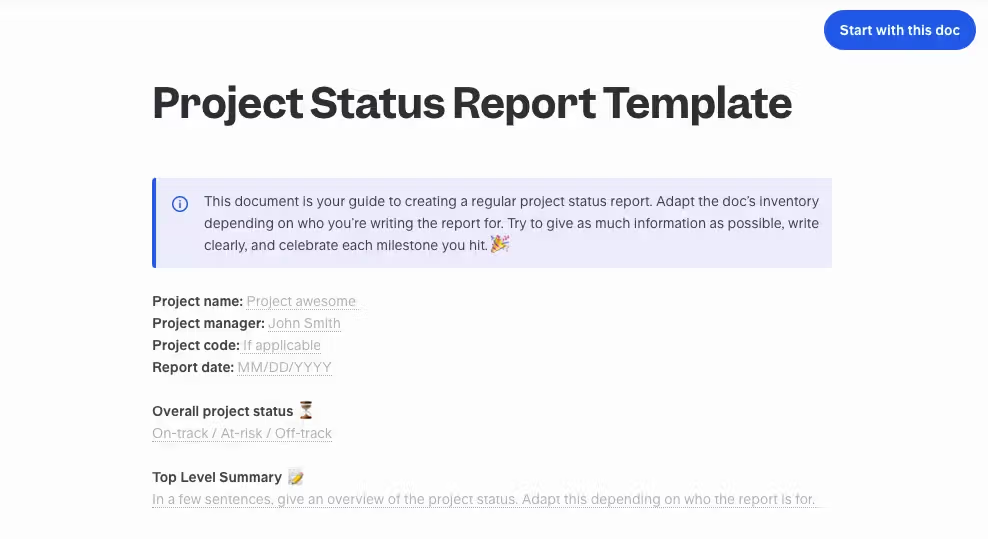
Project scope template
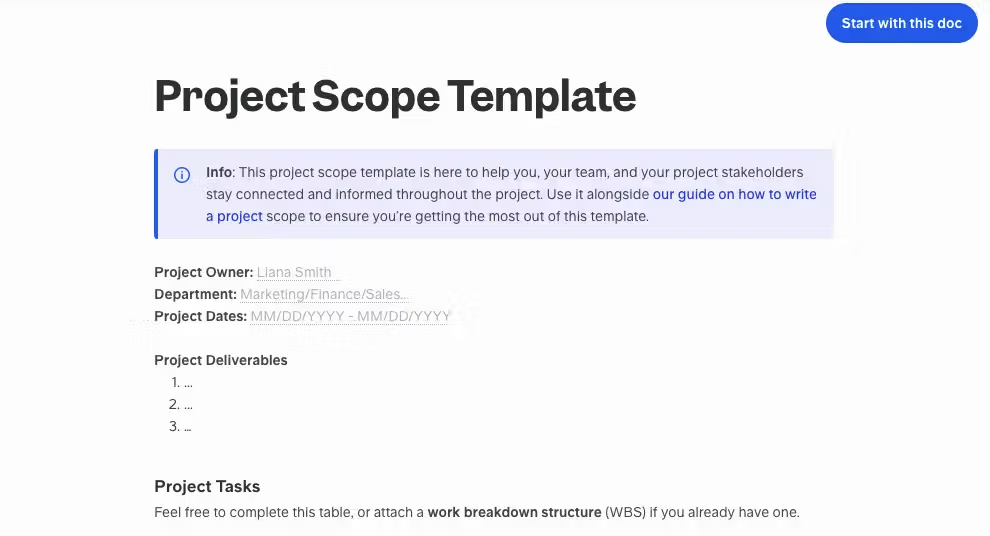
Project plan template

New business project report template
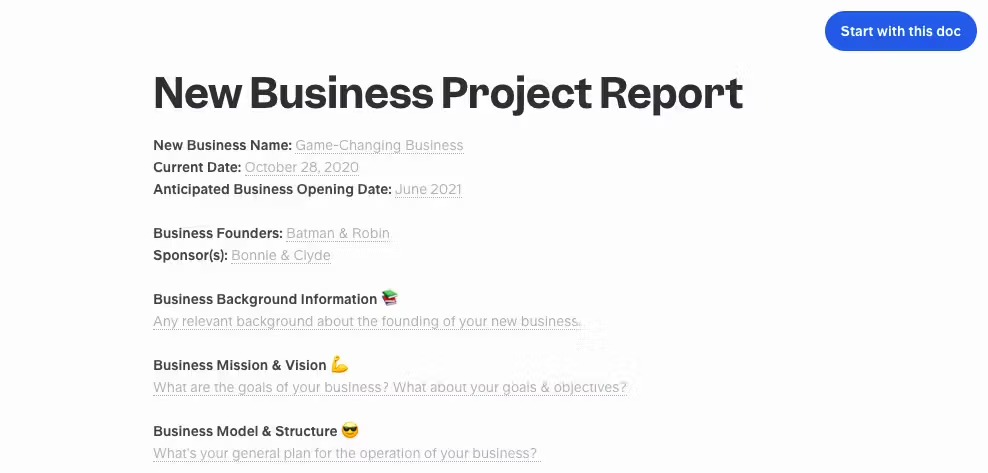
Software Design documentation template
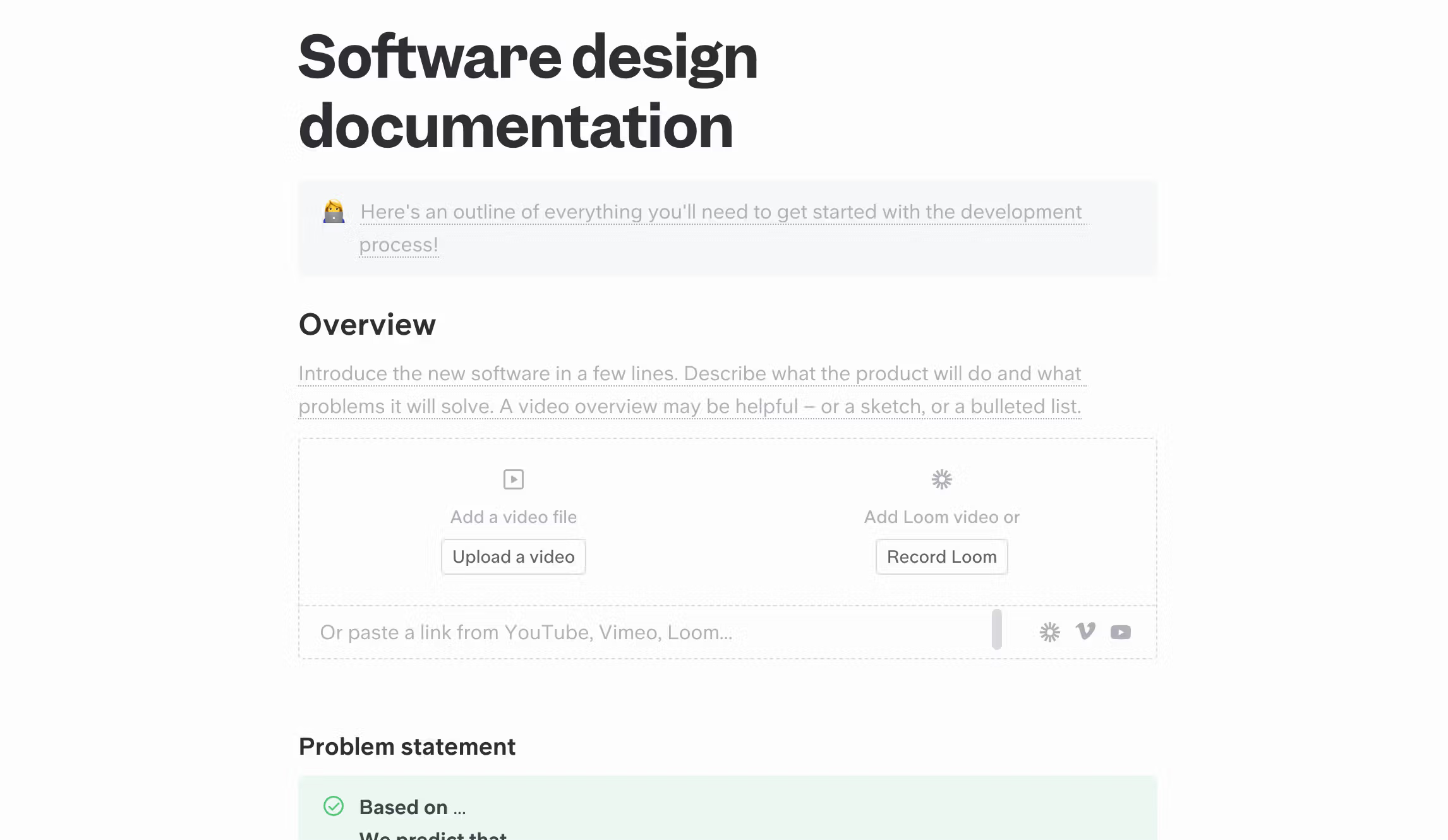
What skills should a project manager have?
If you're considering project management careers, you’re likely curious about the skill set your future employer might be looking for. Here's a selection of the top skills that project managers absolutely must have, according to the project management institute or PMI.
- General management, leadership & people skills related to direction, vision, coaching, mentoring & career development, sound judgement, issue & conflict resolution, decision making, negotiation, communication, and team building
- Fundamental project management skills & knowledge of project management tools & techniques (in accordance with the Project Management Body of Knowledge or PMBOK guide)
- Life cycle management
- Specific industry knowledge depending on the context
- General experience with managing deliverables, schedules and/or milestones, managing teams, organizing efficient work processes, defining requirements & timetables, and project strategy
- Personality traits like flexibility, confidence, commitment, having an open mind, common sense, trustworthiness, and creativity
- Great people management skills
- Project management experience is an asset
- Project management professional or a PMP certificate is an asset
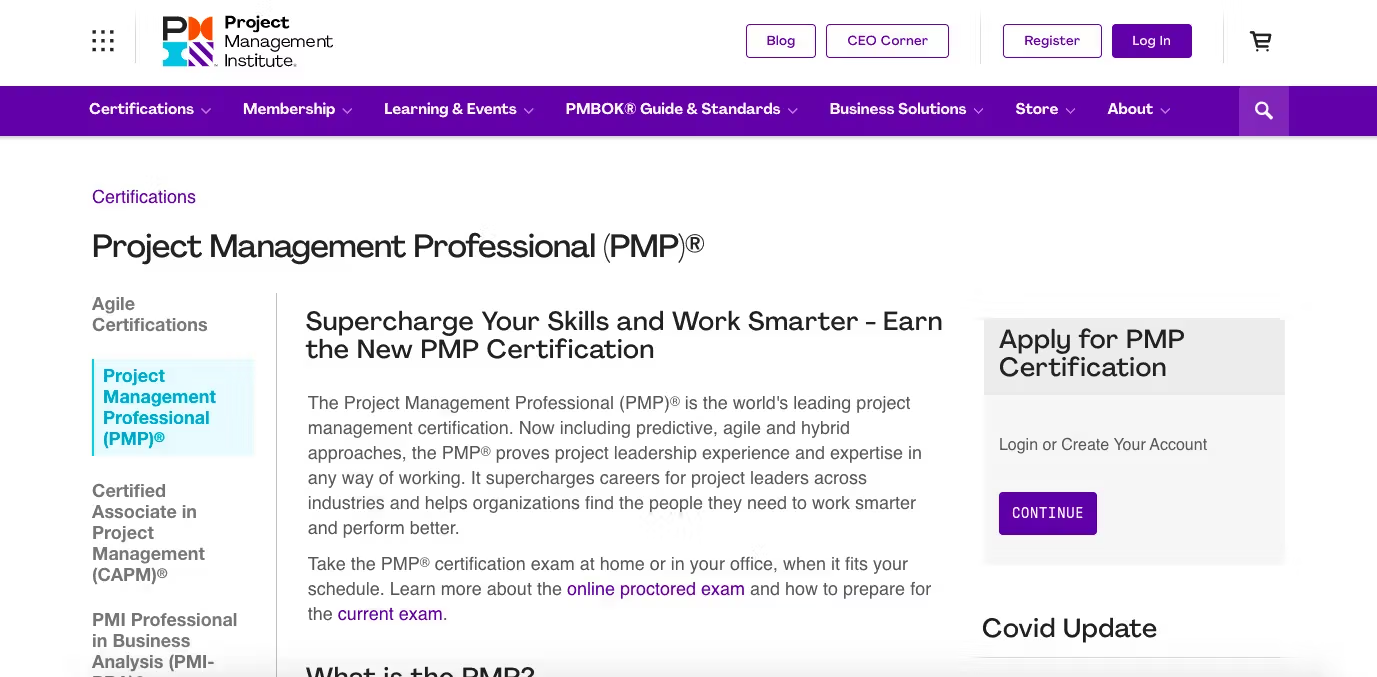
Is project management a good career path?
Depending on your career objectives, personality, work experience, and skills, project management could make an excellent career path for you.
Benefits of a career in project management:
- Relatively high salaries
- High demand
- Flexibility and variety in your workdays
- Dynamic, fast-paced work environment
- A social job where you get to work with lots of different kinds of people
Drawbacks to a career in project management include:
- Long hours
- Stressful work situations
- Balancing lots of different responsibilities
- A lot of responsibility
- You may not always be working on projects you're passionate about
- You may have to make tough decisions and be "the bad guy" at times
How to start a career in project management?
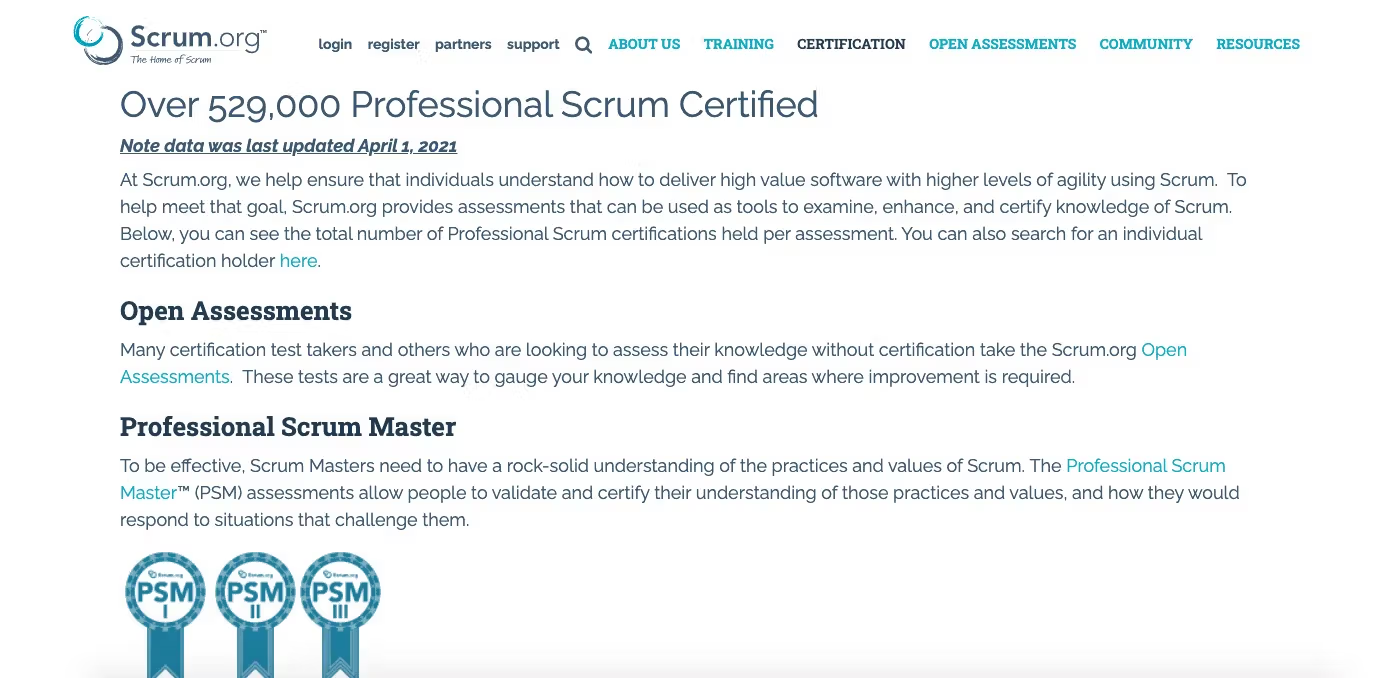
Without a doubt, project management is an exciting career with a lot of potential for growth, variety, and opportunity. If you're thinking that it might be the job for you, there are a few things you can do to get started.
First, think about whether the project management career path is right for you. It might be worthwhile for you to reach out to any project managers you know or are working in your community to have a chat. You never know, they might even become a mentor to you down the line. You can also try browsing a learning platform or other online resource to learn more about the industry.
Next comes education. There are a variety of paths you can take when it comes to project management education, and one isn't necessarily better than the other. Many project managers take unrelated university degrees and then get into the project management world later on. Others start on the project management trajectory right from the get-go. Some switch to project management from another industry when they're already well-established in their professional life. Whatever you choose, know that it's a good idea to get project management certification at some point.
There are many different types of project management programs out there. The gold standard is the Project Management Professional or PMP certification provided by the Project Management Institute PMI. However, this isn't the only option. There's also the Prince2 sixth edition certification, which was developed in the United Kingdom, as well as other choices like the Scrum certifications.
Last, the most important thing to gain on your path to becoming a project manager is experience. If you take one of the project management courses listed above, you'll gain loads of relevant experience there. However, you can also acquire great project management experience in other jobs or even hobbies. Just take a lot at the list of desirable skills listed above; many of those can be practiced in a variety of contexts.
Before we finish things off, we'll leave you with a couple tips. First, if you want a career in project management, one of the best things you can do is find a great mentor to help guide you. Second, get as much experience and work as many projects as you can. Third, make sure you get really familiar with all the methodologies, tools, approaches, and skills mentioned in this article.

